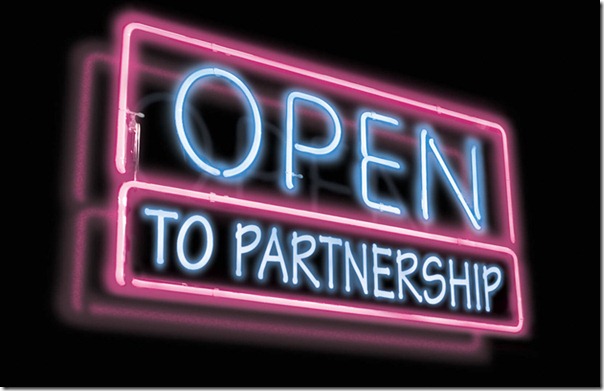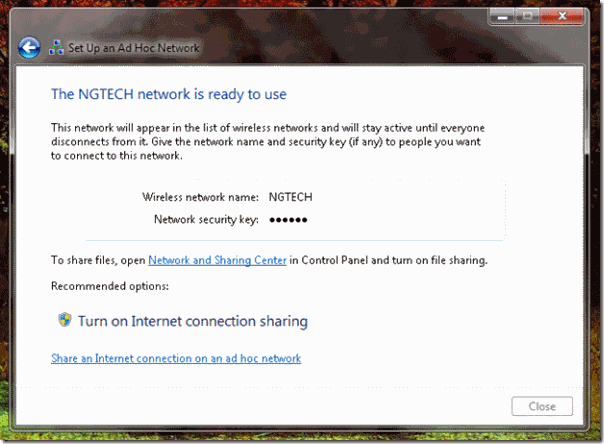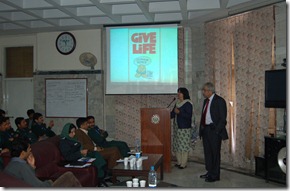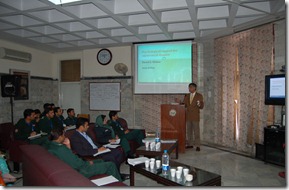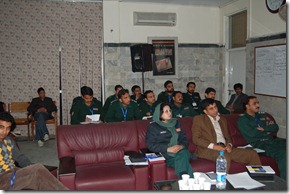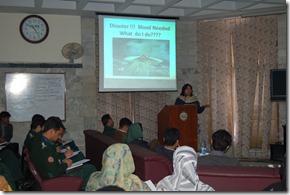Khamoshi ka Boycott: Booti Culture and its Relation with Night Packages: ProPakistani |  |
- Khamoshi ka Boycott: Booti Culture and its Relation with Night Packages
- Cellcos-ISPs to Partner for Total Communication Solutions
- 0-1-2-3-4 The G’s of Mobile Communication
- How to Use WiFi Modem as a Secure Wireless Hotspot
- IBM and Holy Family Hospital Hosted Disaster Management Workshop
| Khamoshi ka Boycott: Booti Culture and its Relation with Night Packages Posted: 28 Feb 2011 02:37 AM PST Khamoshi ka Boycott: Booti Culture and its Relation with Night Packages is a post from: ProPakistani Letter published on ProPakistani last week on Telenor's latest campaign called "Khamoshi ka Boycott" generated lot of buzz in the industry. The writer had a viewpoint which she expressed in her own way – and it was extensively discussed in the comments section. This criticism on "Khamoshi ka Boycott" didn't stop there. Today, Mudassar Jehangir a renown telecom journalist, produced a story showing his concerns over the campaign, with highly arguable thoughts. Here is the link of the story published on ApnaTime Along with other things that Mudassar discussed, following point caught my attention. Here's the crux of what he had to say:
Not only this, they remain busy in the days too when they keep themselves engaged with SMSes. Mudassar Jehangir thinks that Telenor should have abandoned these night packages before launching the campaign if they had indeed wanted to put a cap on Booti culture. By the way, we have written in past on night packages, and how they impact the social values and academic performance of the students/youth. Moreover, Punjab and KPK's provincial assemblies have passed bills to ban nights packages. Such kind of questions being thrown at Telenor is very natural, based on their own slogan: "Khamoshi ka Boycott". This is just because company made a strategic mistake of coupling a CSR initiative with the brand itself. We all understand that at the end of the day Telenor is a business entity and it has to earn money to sustain – but you will agree with me that businesses do unethical things too; night packages being one of them. With "Khamoshi ka Boycott", Telenor may face other similar questions in future too. Related posts:
|
| Cellcos-ISPs to Partner for Total Communication Solutions Posted: 28 Feb 2011 12:41 AM PST Cellcos-ISPs to Partner for Total Communication Solutions is a post from: ProPakistani
Recently held Mobile World Congress event in Spain provided a collective perspective on the industry's maturity around the world, especially the Middle East and South Asian regions. Operators from various countries seemed to share a consensus over the changing trends in the industry and accepted a growing realization; data services had become the need of the moment and remained primed for growth similar to voice services several years ago. For most operators, the influx of smartphones has meant the need to incorporate new technologies at a rapid pace in order to sustain market share. While data service users in the region remain a relative minority compared to the overall cellular subscriber numbers, there has been rapid uptake of GPRS/EDGE and 3G usage as more consumers become Apple peeps, or Droid geeks or even part of the Berry brigade. And a large driver for this is the multi-billion dollar app development industry that has blossomed from the desktop computers of homes around the world. Analysts have assessed cellular operators in Pakistan to be reaching a saturation point with voice and SMS usage. It is unlikely that the average minutes used by a subscriber will be show a significant positive trajectory or cause any excitement for the companies in terms of ARPU. However, the new stream of data usage revenue is continuing to be worked on as the next big thing for the local market. Current estimates place around 4 to 5% of all cellular subscribers in Pakistan to be using GPRS/EDGE services. So, taking into account the latest figures released by the PTA that would make around 4 to 5 million subscribers having access to mobile data. This would be inclusive of the approximately 60 thousand or so Blackberry service users, who since last year have been provided a low-fat version of the popular RIM service, while paying for the complete buffet. A key deterrent to the large scale adoption of data services is the speed on offer; in the current age of downloads and online applications, GPRS and EDGE are the CNG of the mobile fuel world. Many smartphone users incorporate Wi-Fi as the second source for a faster online connection, but this is limited to their homes and offices. So, while 3G remains a contested debate, cellular operators have to come up with strategic avenues to drive up revenue and become more than a one-trick pony. One answer to this dilemma is Internet Service Providers (ISPs). A roadmap successfully implemented by many cellcos around the world is now taking shape in Pakistan, with operators seeking to offer people a uniform platform for all their communication needs. And the needs of the present day include landline, Cable TV and internet. By partnering with ISPs, cellular operators are seeking to shift the business model from purely ARPU-focused to RGU-focused. The latter, in simple words, identifies a single user as the revenue contributor for several services. For most cellcos, the push towards this model is a simple integration with internal units. Mobilink has sister concerns of Infinity and Link DOT Net to count on, Ufone continues to court PTCL and its expansive network, and Warid and Wateen remain a couple through the tough times. That brings us to the two players who are devoid of any family ties with an ISP: Zong and Telenor. While uncertainty exists if Zong would be interested in looking at internet as an alternative stream of business, Telenor in the recent period has begun the process to form a strategic partnership with some ISP player in the local market. Wi-Tribe appears top of the list at this stage, due to a larger presence. The Wi-Max operator has been making in-roads into a hotly contested market, but service issues have lost it much of the flavor it had once promised. For the consumer, the continued competition in the market makes for better offerings to be made to it by the cellcos. Additionally, the value of having only one company to deal with for all purposes, especially when one needs to call a helpline, should make the choice shift from being purely about price, and something about service. And while the country is far away from being a completely connected society, the hope that cellcos have sought an interest in the wider scope of communication than thousands of minutes and SMSs, should prove a boon for the customer in the coming years. Related posts:
|
| 0-1-2-3-4 The G’s of Mobile Communication Posted: 27 Feb 2011 08:40 PM PST 0-1-2-3-4 The G’s of Mobile Communication is a post from: ProPakistani The goal of this article is to let the readers know of the different generations of wireless telephone networks we have been through or hopefully will see in the future. I assure you it will be an interesting and informative read. 0G Networks: 0G or pre-cellular network is here just for the sake of reference, always remember your 'roots' kind of thing. They operated mostly the same way as the landlines did the only difference was they were wireless. Some people would still wish for these types of networks for two reasons. One, it may be a good choice for long range communication in scarcely populated areas (a single tower, Base Station, can cover an area of 40-60 miles). Two, you could listen to them using your Radio ;)
1G Network: Again an analog communication system, almost same as the previous 0G network. It can also be a good choice for long range communication. The technology used here (AMPS) was later converted to D-AMPS (Digital-AMPS) which is a 2G standard.
2G Networks: Here comes the most dominant form of wireless telephone network in Pakistan. From here after the term 'technologies' will be replaced by 'standards'. For you understanding you can just ignore this and keep on reading it as technologies.
3G Networks: OK, so here things get a little bit tricky. Simply put it as 3G networks were not Revolution but Evolution. 1G & 2G networks are completely different; it was like moving from a horse-cart to an automobile. This is not the case with 3G, consider 3G to be the advanced and improved form of already existing 2G standards. These standards were improved significantly and thus the newly emerging ones were named Third Generation or 3G. So if a company is using GSM as it's 2G backbone (e.g. Telenor) to move to 3G it will have to use an improved form of the GSM standards and if a company was on CDMA (e.g. VPTCL) it will use an improved form of the CDMA standards for their network to be called 3G complaint. Also, any mobile telecommunication service that fulfills the requirements of the ITU (International Telecommunication Union) can be classified as a 3G network/service.
4G Networks: For 4G technologies I will limit myself to LTE (Long Term Evolution) as it is going to be the replacement for both the UMTS and CDMA2000 based technologies in the future.
Related posts:
|
| How to Use WiFi Modem as a Secure Wireless Hotspot Posted: 27 Feb 2011 08:35 PM PST How to Use WiFi Modem as a Secure Wireless Hotspot is a post from: ProPakistani This is a guest post by Ahmed Ali Khawaja who writes on Guppu.com I use PTCL EVO as my primary Internet connection. As you may know Its a USB dongle which connects with my Laptop – Now, sometimes when I need to access Internet on my other devices such as net-book, cell phones, etc simultaneously I end up with no option to share my EVO's internet with them. This feature of Windows 7 "Set up a wireless Ad Hoc Network" comes really handy in such situation. Just In few clicks I can access my EVO's Internet on my all other devices. This can work with all WiMAX dongles too, meaning that you can share your Wateen, wi-tribe, Qubee internet with other computers, devices too. So give it a try – it's a life savior. How to Define AD Hoc Network: The first thing to do is to access "Set up an Ad Hoc Network" wizard. To get the wizard going, search it from the start menu.
ummm ok let me help you on this "but don’t tell anyone".
In case you face any problems while setting up AD HOC network then share in comments. Related posts:
|
| IBM and Holy Family Hospital Hosted Disaster Management Workshop Posted: 27 Feb 2011 08:28 PM PST IBM and Holy Family Hospital Hosted Disaster Management Workshop is a post from: ProPakistani IBM and Holy Family Hospital recently arranged a train-the-trainer workshop on 'Review of Services for Disaster Management'. Arranged for front line health workers and aid providers, from organizations including Rescue 1122 and The National Special Education Centre, the session covered lectures on Over view of Disasters –
Attock Telemedicine center is most advanced Telemedicine center in the country and Telemedicine capabilities of this center have been enhanced by Pakistan Telemedicine project – a Public private partnership of IBM, US State department, Wateen Telecom and Holy family hospital. Dr. Tahira Zafar greatly appreciated IBM’s initiative of creating awareness among emergency health care providers and various NGOs to prepare them for disaster management. 'This will,' she said, 'create a major impact on care of people involved in disaster management in the future.' She recommended that such awareness programs should be carried out regularly throughout the country. Free copies of the manuals: 'Psychological support for survivors of disaster' and 'Helping child survivors of disaster' were distributed by IBM at the event. These manuals are meant for use by medical personnel, social and health workers, teachers and volunteers. Anybody interested in requesting these copies can write in to ibm_pakistan [at] ibm.com Related posts:
|
| You are subscribed to email updates from Pro Pakistani To stop receiving these emails, you may unsubscribe now. | Email delivery powered by Google |
| Google Inc., 20 West Kinzie, Chicago IL USA 60610 | |


 8:08 PM
8:08 PM


